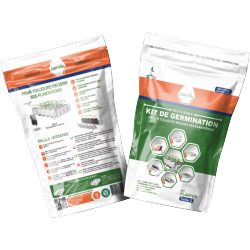Thai massage is an ancient healing practice that has been perfected over centuries. It combines acupressure, Indian Ayurvedic principles, and assisted yoga postures to create a deeply relaxing experience. In Melbourne, Thai massage has become increasingly popular due to its numerous benefits, including stress relief, improved circulation, and enhanced flexibility.
The Benefits of Thai Oil Body Massage
Thai Oil Body Massage takes traditional Thai massage to the next level by incorporating the use of essential oils. These oils not only enhance the massage experience but also provide additional therapeutic benefits. The combination of oil and massage techniques helps to soothe sore muscles, reduce tension, and promote a sense of overall well-being.
Relaxation and Stress Relief
One of the primary reasons people seek out Thai Oil Body Massage is for its unparalleled relaxation benefits. The gentle, rhythmic strokes used in this massage technique help to calm the mind and body, making it an effective treatment for stress and anxiety. The essential oils used in the massage also have calming properties, further enhancing the relaxation experience.
Improved Circulation and Flexibility
Thai Oil Body Massage is known for its ability to improve circulation and flexibility. The massage techniques stimulate blood flow, which helps to deliver oxygen and nutrients to the muscles and tissues. This improved circulation can lead to faster recovery from injuries and reduced muscle soreness. Additionally, the assisted stretching involved in Thai massage helps to improve flexibility and range of motion.
Detoxification and Immune Boosting
The combination of massage and essential oils in Thai Oil Body Massage can also aid in detoxification and boosting the immune system. The massage techniques help to stimulate the lymphatic system, which is responsible for removing toxins from the body. The essential oils used in the massage have various properties that can support the immune system, helping to keep the body healthy and balanced.
Massage Melbourne Thai: A Haven for Relaxation
Melbourne is home to numerous massage centers that offer a variety of treatments, but few can compare to the experience of a traditional Thai massage. Massage Melbourne Thai is renowned for its authenticity and skilled therapists who are trained in the ancient art of Thai massage. Whether you’re looking for a traditional Thai massage or a Thai Oil Body Massage, Melbourne offers a range of options to suit your needs.
Expert Therapists for a Customized Experience
One of the key factors that set Massage Melbourne Thai apart is the expertise of the therapists. They are trained to tailor each massage to the individual needs of the client, ensuring a personalized and effective treatment. Whether you need a deep tissue massage to relieve muscle tension or a gentle massage for relaxation, the therapists at Massage Melbourne Thai have the skills and knowledge to provide the perfect massage experience.
A Tranquil Setting in the Heart of Melbourne
Located conveniently in the heart of Melbourne, Massage Melbourne Thai offers a tranquil escape from the hustle and bustle of the city. The serene environment, combined with the soothing sounds and aromas, creates the perfect setting for relaxation and rejuvenation. It’s no wonder that both locals and visitors alike choose Massage Melbourne Thai as their go-to destination for massage therapy.
The Ultimate Destination for Wellness
When it comes to finding the ultimate destination for wellness and relaxation, Massage Melbourne Thai stands out. With a focus on providing high-quality massage services and a commitment to customer satisfaction, it’s no surprise that this massage center has earned a stellar reputation. Whether you’re in need of a Thai Oil Body Massage or any other type of massage, Massage Melbourne Thai offers the perfect solution for your wellness needs.
Book Your Thai Oil Body Massage Today
If you’re ready to experience the benefits of a Thai Oil Body Massage, there’s no better place to go than Massage Melbourne Thai. With expert therapists, a tranquil setting, and a commitment to providing the best massage experience, you can trust that you’ll leave feeling relaxed and rejuvenated.
Conclusion
For those seeking an unparalleled relaxation experience in Melbourne, a Thai Oil Body Massage at Massage Melbourne Thai is the perfect choice. Whether you’re looking to relieve stress, improve circulation, or boost your overall well-being, the skilled therapists and tranquil environment will ensure you receive the highest quality treatment. Visit Blissthaimassage.com.au to learn more and book your appointment today.











